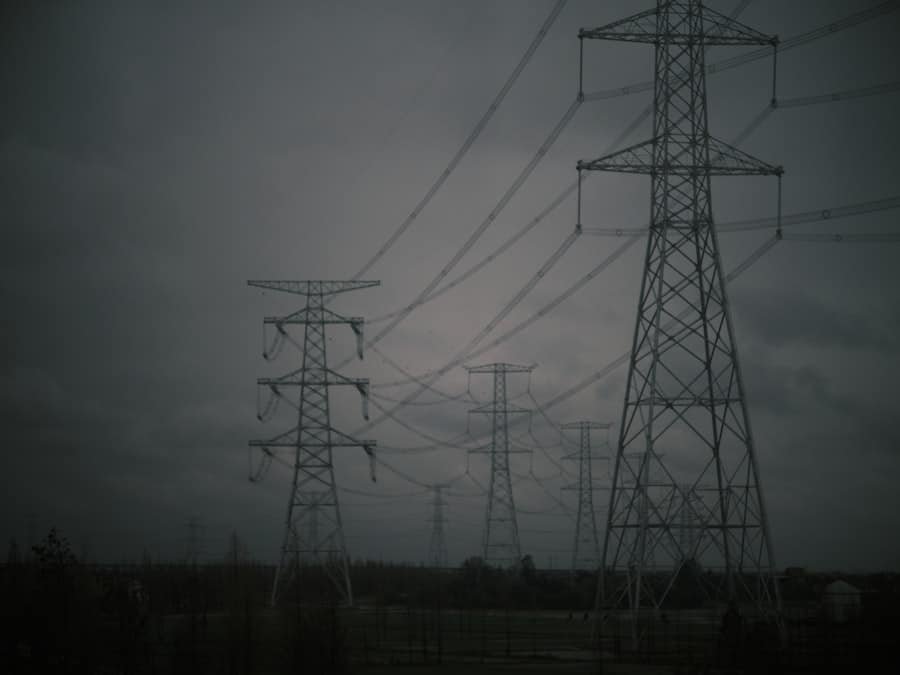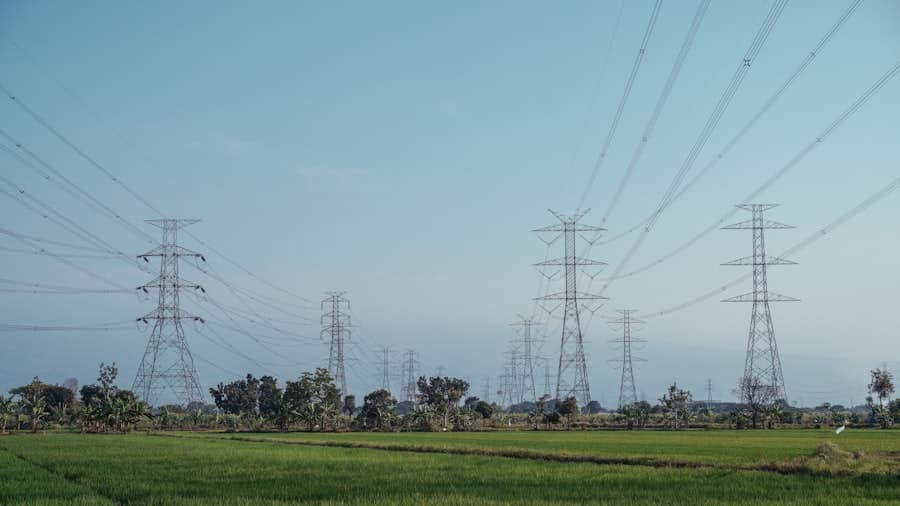In recent years, the global landscape has witnessed an unprecedented shift towards sustainable energy solutions, driven by a confluence of environmental concerns, economic factors, and technological advancements. The urgency to combat climate change has propelled governments, businesses, and individuals to seek alternatives to fossil fuels, which have long been the backbone of energy production. This growing demand is not merely a trend; it reflects a fundamental change in how societies view energy consumption and its impact on the planet.
As populations expand and urbanization accelerates, the pressure on traditional energy sources intensifies, necessitating innovative approaches to meet the needs of a burgeoning global population. The transition to sustainable energy is multifaceted, encompassing renewable sources such as solar, wind, and hydroelectric power. However, one of the most promising avenues that has gained traction is waste-to-energy (WtE) technology.
This approach not only addresses the pressing issue of waste management but also provides a viable solution for generating energy from materials that would otherwise contribute to landfills. As cities grapple with increasing waste generation, the integration of WtE technologies into their energy portfolios presents a dual benefit: reducing waste while simultaneously producing clean energy. The convergence of these factors underscores the critical role that sustainable energy solutions will play in shaping a more resilient and environmentally responsible future.
Key Takeaways
- The demand for sustainable energy solutions is on the rise due to increasing awareness of environmental issues and the need for cleaner energy sources.
- Advancements in waste-to-energy technologies have made it more efficient and cost-effective to convert waste into energy, reducing reliance on fossil fuels.
- Waste-to-energy processes offer significant environmental benefits, including reducing greenhouse gas emissions and minimizing the need for landfill space.
- Economic incentives, such as government subsidies and carbon credits, are driving the implementation of waste-to-energy projects and making them more financially viable.
- Global initiatives and policies, such as the Paris Agreement and the European Union’s Circular Economy Action Plan, are supporting the development and implementation of waste-to-energy technologies on a larger scale.
Advancements in Waste-to-Energy Technologies
The evolution of waste-to-energy technologies has been marked by significant advancements that enhance efficiency and reduce environmental impact. Traditional incineration methods have evolved into more sophisticated processes that incorporate advanced thermal treatment techniques, such as gasification and pyrolysis. These methods not only convert waste into energy but also minimize harmful emissions and maximize resource recovery.
Gasification, for instance, involves heating organic material in a low-oxygen environment to produce syngas, which can be further processed into electricity or biofuels. This technology represents a paradigm shift in how waste is perceived—not merely as refuse but as a valuable resource. Moreover, the integration of modern filtration and scrubbing systems has significantly improved the emissions profile of WtE facilities.
Advanced air pollution control technologies can capture particulate matter, heavy metals, and other pollutants before they are released into the atmosphere. This is crucial in addressing public concerns about air quality and health risks associated with waste incineration. Additionally, innovations in anaerobic digestion have expanded the scope of WtE technologies to include organic waste, such as food scraps and agricultural residues.
By harnessing the natural decomposition process, anaerobic digestion not only generates biogas for energy but also produces nutrient-rich digestate that can be used as fertilizer, thereby closing the loop in waste management.
Environmental Benefits of Waste-to-Energy

The environmental benefits of waste-to-energy technologies are manifold and extend beyond mere energy production. One of the most significant advantages is the reduction of landfill use. Landfills are not only a source of greenhouse gas emissions—particularly methane—but also pose risks to soil and water quality through leachate contamination.
By diverting waste from landfills and converting it into energy, WtE facilities play a crucial role in mitigating these environmental hazards. This process contributes to a circular economy where waste is treated as a resource rather than a burden. Furthermore, WtE technologies contribute to reducing reliance on fossil fuels.
By generating energy from waste materials, these systems help decrease the demand for coal, oil, and natural gas, which are major contributors to carbon emissions. The energy produced from WtE can be used to power homes, businesses, and even electric vehicles, thereby promoting cleaner alternatives to traditional energy sources. Additionally, many WtE facilities are designed to operate in conjunction with renewable energy sources, creating hybrid systems that enhance overall energy resilience and sustainability.
Economic Incentives for Waste-to-Energy Implementation
The economic incentives for implementing waste-to-energy technologies are compelling and multifaceted. First and foremost, WtE facilities can provide a stable source of revenue for municipalities by converting waste management costs into income-generating opportunities. By producing energy that can be sold back to the grid or used to power local infrastructure, cities can offset their waste disposal expenses while simultaneously contributing to their energy supply.
This financial model is particularly attractive in regions where landfill space is limited or where tipping fees for waste disposal are rising. Moreover, the development of WtE facilities can stimulate local economies by creating jobs in construction, operation, and maintenance. The construction phase alone can generate significant employment opportunities, while ongoing operations require skilled workers for facility management and technology oversight.
Additionally, as WtE technologies continue to advance, there is potential for innovation-driven job creation in research and development sectors focused on improving efficiency and reducing costs. The economic benefits extend beyond direct job creation; they also encompass ancillary industries such as recycling and composting services that can thrive alongside WtE operations.
Global Initiatives and Policies Supporting Waste-to-Energy
Governments around the world are increasingly recognizing the potential of waste-to-energy technologies as part of their broader sustainability agendas. Various international agreements and national policies are being implemented to promote WtE as a viable solution for both waste management and energy production. For instance, the European Union has set ambitious targets for reducing landfill use and increasing recycling rates through its Circular Economy Action Plan.
This framework encourages member states to invest in WtE technologies as part of their waste management strategies. In addition to regulatory frameworks, financial incentives such as grants, subsidies, and tax credits are being offered to encourage investment in WtE projects. Countries like Sweden have successfully integrated WtE into their national energy mix through supportive policies that prioritize renewable energy sources.
The Swedish government provides financial support for WtE facilities while also implementing strict regulations on landfill use. This comprehensive approach has positioned Sweden as a leader in sustainable waste management practices, demonstrating how effective policy frameworks can drive the adoption of innovative technologies.
Challenges and Misconceptions Surrounding Waste-to-Energy

Despite the numerous benefits associated with waste-to-energy technologies, several challenges and misconceptions persist that hinder their widespread adoption. One significant challenge is public perception; many communities harbor concerns about air quality and health risks associated with incineration processes. These fears are often exacerbated by misinformation regarding emissions from WtE facilities.
It is essential for stakeholders to engage in transparent communication about the advancements in emissions control technologies that have significantly reduced pollutants released into the atmosphere. Another misconception is that waste-to-energy is a panacea for all waste management issues. While WtE can play a vital role in reducing landfill use and generating energy, it should not be viewed as a substitute for comprehensive waste reduction strategies such as recycling and composting.
Effective waste management requires an integrated approach that prioritizes source reduction and material recovery before considering incineration or other forms of energy recovery. Addressing these misconceptions through education and outreach initiatives is crucial for fostering community support and ensuring successful implementation of WtE projects.
Case Studies of Successful Waste-to-Energy Projects
Several successful case studies illustrate the potential of waste-to-energy technologies to transform waste management practices while generating clean energy.
This facility not only processes municipal solid waste but also serves as an architectural landmark designed by renowned artist Friedensreich Hundertwasser.
The plant employs advanced combustion technology that minimizes emissions while producing district heating for thousands of homes in Vienna. Its success has made it a model for integrating aesthetic design with functional waste management solutions. Another compelling case is found in San Diego, California, where the City’s Miramar Landfill has been transformed into a hub for renewable energy generation through anaerobic digestion technology.
The facility processes organic waste from food scraps and yard debris to produce biogas, which is then converted into electricity for local use.
Future Outlook for Waste-to-Energy Technologies
The future outlook for waste-to-energy technologies appears promising as advancements continue to emerge alongside increasing global demand for sustainable solutions. Ongoing research into more efficient conversion processes and improved emissions control technologies will likely enhance the viability of WtE systems across diverse contexts. Furthermore, as public awareness of climate change grows, there will be greater pressure on governments and industries to adopt cleaner energy practices that include WtE as a key component.
Emerging trends such as decentralized energy production may also reshape the landscape of waste-to-energy technologies. Small-scale WtE systems could become more prevalent in communities seeking localized solutions to both waste management and energy generation challenges. Innovations in modular designs may allow for easier integration into existing infrastructure while providing flexibility in scaling operations based on community needs.
As these trends unfold, it will be essential for stakeholders to collaborate across sectors—government agencies, private companies, and community organizations—to maximize the potential benefits of waste-to-energy technologies in creating a sustainable future.
As the global demand for sustainable waste management solutions continues to rise, the expansion of waste-to-energy technologies is becoming increasingly significant. This trend is not only driven by the need to reduce landfill waste but also by the potential for generating renewable energy. For those interested in optimizing their operations in various sectors, including waste management, exploring effective scheduling tools can be beneficial. For instance, you can read about the top scheduling software options in the article here.
FAQs
What is waste-to-energy technology?
Waste-to-energy technology is a process that converts non-recyclable waste materials into usable forms of energy, such as electricity, heat, or fuel.
How does waste-to-energy technology work?
Waste-to-energy technology typically involves the combustion of waste materials to generate heat, which is then used to produce steam. The steam drives a turbine generator to produce electricity.
Why are waste-to-energy technologies expanding globally?
Waste-to-energy technologies are expanding globally due to the increasing amount of waste generated, the need for sustainable energy sources, and the potential to reduce greenhouse gas emissions.
What are the benefits of waste-to-energy technologies?
The benefits of waste-to-energy technologies include reducing the volume of waste sent to landfills, generating renewable energy, and reducing greenhouse gas emissions.
What are the challenges of waste-to-energy technologies?
Challenges of waste-to-energy technologies include high initial investment costs, potential air pollution from the combustion process, and public perception and acceptance of the technology.

